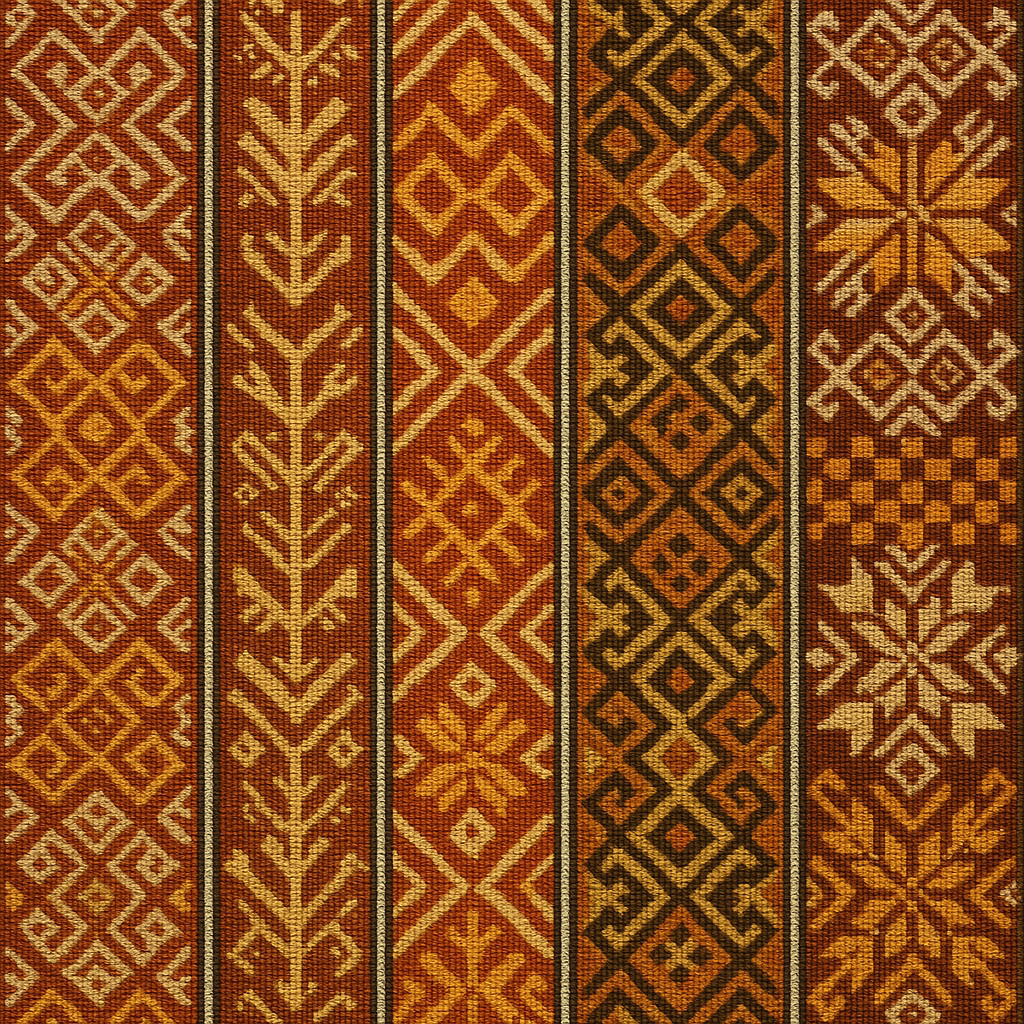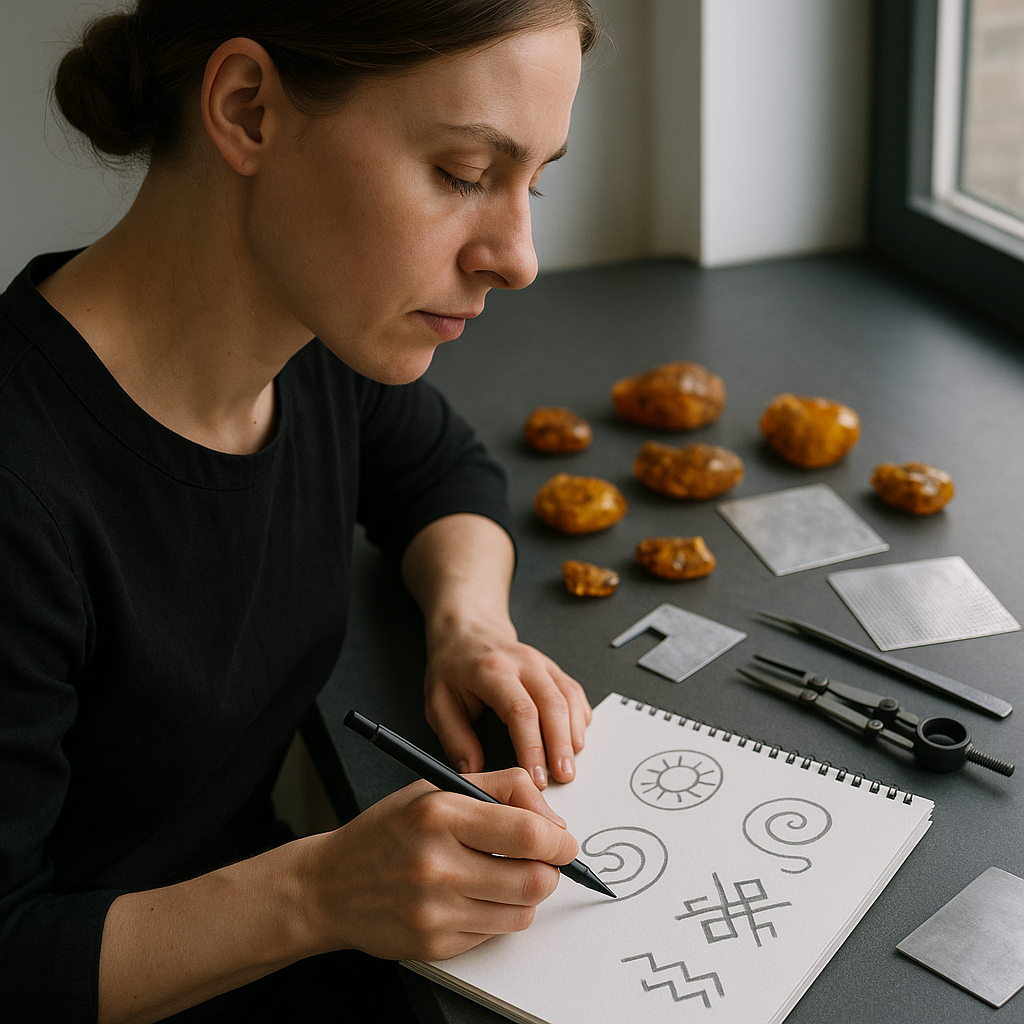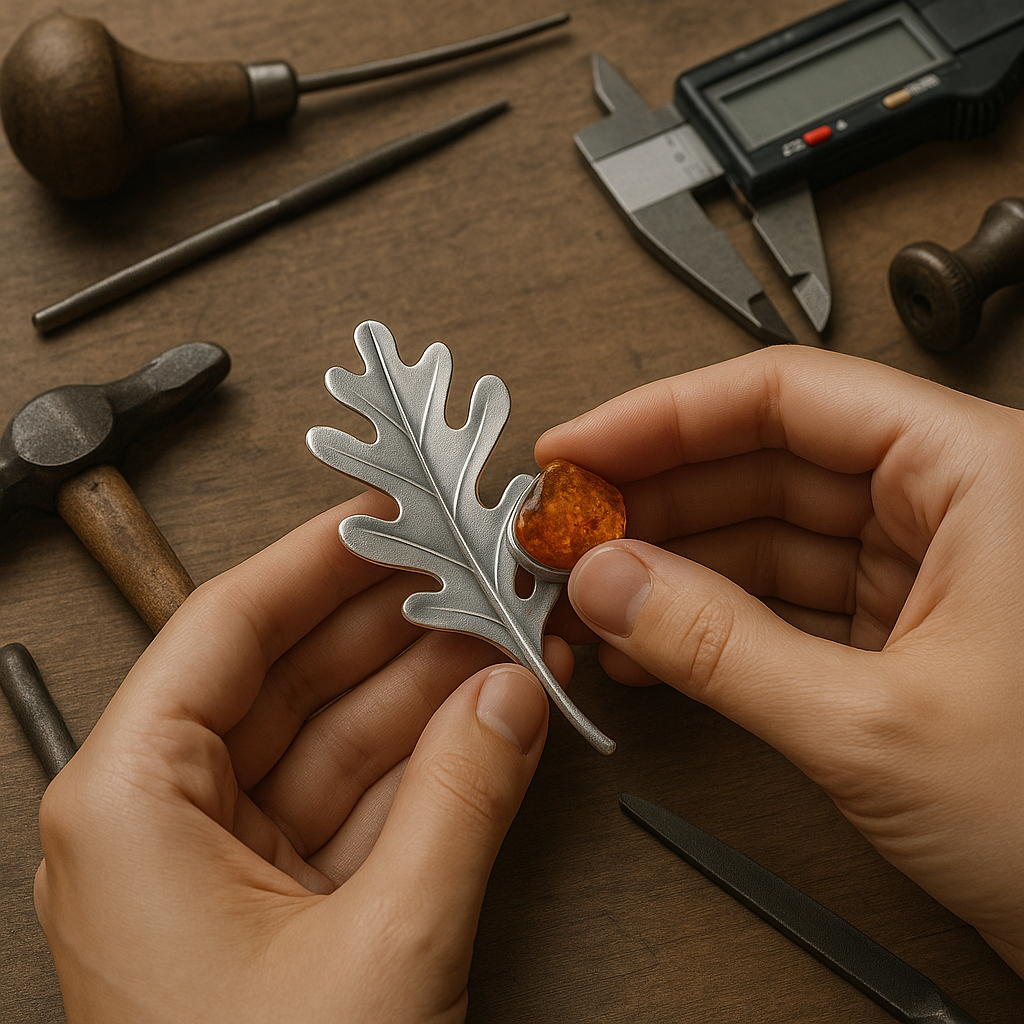
Lithuanian ethnic aesthetics in contemporary jewelry.
Lithuanian ethnic aesthetics represent a rich and profound expression of cultural heritage, with roots reaching back to the earliest layers of Baltic identity. Today, this heritage gains new life in contemporary jewelry, where tradition meets modern innovations. Modern artists draw inspiration from ancient symbols, patterns, and motifs, reinterpreting them through the lens of new technologies, materials, and concepts.
By reading this article, you’ll discover the foundations of Lithuanian ethnic aesthetics, their transformations in today’s jewelry art scene, the most prominent artists and their works, the interplay of traditional and modern materials and techniques, and the influence of global culture on Baltic identity.
Understanding Lithuanian Ethnic Aesthetics
Lithuanian ethnic aesthetics are a complex cultural phenomenon, encompassing national identity, history, mythology, and everyday life. Its foundation lies not only in visual language but also in a deep worldview passed down from generation to generation.
Baltic tradition is characterized by a special connection with nature, cosmological symbols, and abstract geometric forms. Since ancient times, Lithuanian folklore and folk art have featured symbolic depictions of the sun, moon, serpent, world tree, birds, and plants. These elements were not only decorative but also served protective, magical functions, expressing a spiritual understanding of the world.
Lithuanian folk art motifs form a kind of coded language, carrying ancient Baltic beliefs, cosmic perception, and community values. Traditional colors—green, red, yellow, blue—held symbolic meanings and were derived from natural, local dyes. Transformed and adapted for modern needs, these elements have become a source of inspiration in contemporary jewelry.

Key Symbols in Lithuanian Folk Art
Lithuanian folk art is rich with symbols.
-
The Sun – one of the most common motifs, symbolizing life, warmth, and rebirth. It is often depicted as a circle with rays or dots arranged in a circle.
-
The Serpent (Žaltys) – revered by ancient Lithuanians as the guardian of the hearth, symbol of wisdom and fertility, often shown in jewelry as a wavy or spiral form.
-
Geometric Patterns – rhombuses, crosses, and triangles symbolized fertility, the four seasons, the four directions, and other cosmic phenomena.
-
Plant Motifs – flowers, trees (especially oak and linden), branches – expressed connection with nature, the cycle of life, and continuity.
-
Birds – such as cuckoos and swans, were linked in mythology with the soul’s journey, prophecy, and the connection between earthly and spiritual worlds.
In modern jewelry, these symbols are often reimagined as abstract forms, preserving their spiritual meaning while acquiring new artistic expression.
Evolution of Ethnic Inspiration in Contemporary Lithuanian Jewelry
The contemporary Lithuanian jewelry scene has become a dynamic space where ancient Baltic aesthetics merge with modern art trends. In recent decades, there has been a shift from directly copying traditional symbols to subtler, more conceptual interpretations.
Traditional motifs undergo transformation—becoming minimalist, abstract, and adapted to modern lifestyles and aesthetics. For example, traditional belt patterns may appear in modern silver rings, simplified or fragmented, or presented in unexpected contexts.
Artists strive to balance preservation with innovation. Ethnic elements become not only decorative but also conceptual tools to discuss identity, memory, continuity of tradition, and change in the global context.

International art movements, Lithuania’s regained independence, and the need to rediscover and redefine national identity have greatly influenced modern jewelry. Academies, symposia, and exhibitions provide spaces where traditional elements gain new life.
Case Studies: Leading Lithuanian Designers
-
Sigitas Virpilaitis – a prominent figure whose work is deeply tied to Baltic mythology. His pieces, monumental and conceptual, often incorporate ancient cosmological symbols (sun, moon, serpents) with modern, sometimes ironic interpretations. His “Cosmogonic Jewelry” not only functions as wearable art but also as a philosophical reflection on humanity’s place in the universe.
-
Danutė Jonušienė – known for subtle use of plant motifs such as rue, fern, and oak leaves. Her silver works are elegant, precisely detailed, and combine traditional techniques (filigree, granulation) with modern forms. Her collection “Secrets of Herbs” shows how plant motifs can transform into delicate, contemporary forms while retaining symbolic meaning.
-
Vilmantas Dambrauskas – recognized for experimental approaches to Baltic forms and symbols. His abstract, minimalist amber and silver compositions hint at traditional motifs (sun, celestial bodies, serpents). His series “Baltic Code” successfully presents Lithuanian aesthetics on the international stage, preserving authenticity while speaking in a universal artistic language.
Materials, Techniques, and Sustainability
In contemporary Lithuanian jewelry, traditional and modern materials merge into a unique dialogue between past and present.
-
Amber, the material most associated with the Baltic region, is reimagined in innovative forms—polished into unusual shapes or combined with silver, titanium, or synthetic materials. Raw, unpolished amber is also increasingly valued for its natural beauty.
-
Silver remains popular but is now often paired with unconventional materials—wood, ceramics, textiles, glass, even plastic. Traditional silverworking techniques like filigree and granulation are revived but modernized.
-
Sustainability plays an important role: recycled materials, responsibly sourced amber, and ethically mined metals reflect both ecological awareness and continuity with Baltic reverence for nature.
-
Technology has also shaped the field—3D printing, laser cutting, and digital

design allow precise recreations of complex patterns or entirely new abstractions inspired by traditional motifs.